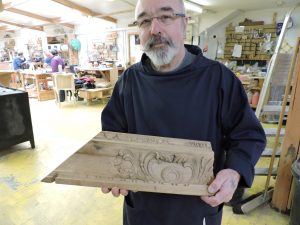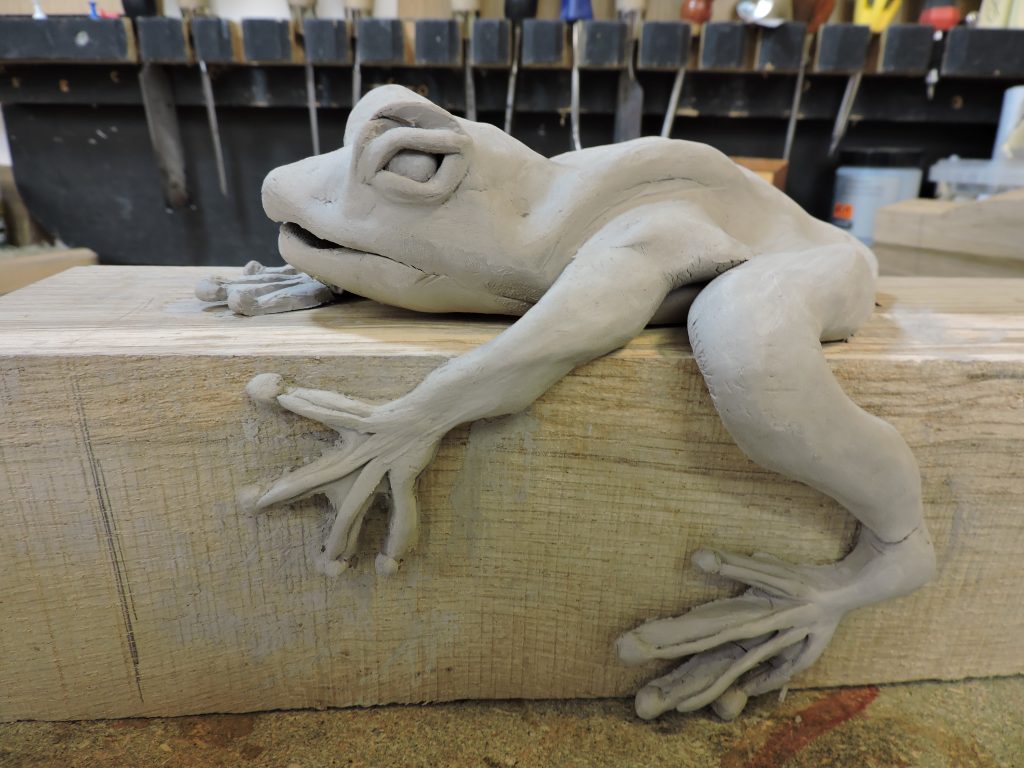For the past two weeks we’ve been privileged to have at the school one of the country’s leading experts in woodcarving.
When he’s not teaching, John White runs John White Woodcarving, and is a renowned authority in this age-old craft.
While some aspects of woodcarving can now be handled with CAD and CNC technologies, nothing can quite match up to the painstaking skill of hand carving.
That’s why we teach wood carving at the school, giving students another important skill to add to their portfolio.
“The great thing about woodcarving is that you don’t have to be artistic,” says John. “It’s a skill where you can easily learn the basics then, through practice, become quite expert.”

For carving a design onto wood, students are taught how to first draw their design onto tracing paper, and how to then transfer the design onto the piece of wood.
From then on, it’s about slowly making that design come alive using different sizes of carving gouges.
But for more complex pieces such as statuary, John has also been teaching our students how to make clay models of their proposed pieces, and how to then use those models as 3D blueprints.
Pictured here is one student’s clay frog that he’s now replicating in wood, and the beginnings of a wooden head that’s slowly taking shape. We’ll let you know how both of them turn out.

John has over thirty years experience in a diverse range of woodcarving projects and, among his clients have been the House of Lords, the Duke of Westminster, National Trust and National Museums Liverpool.
“It’s always a pleasure to come to the Chippendale school,” says John. “While some of the students are a bit nervous at first, they all enjoy this part of the course – and, of course, it’s helping to keep a traditional skill alive.
“Also, being able to promote themselves as having wood carving skills could help them win commissions in future,” he says.
